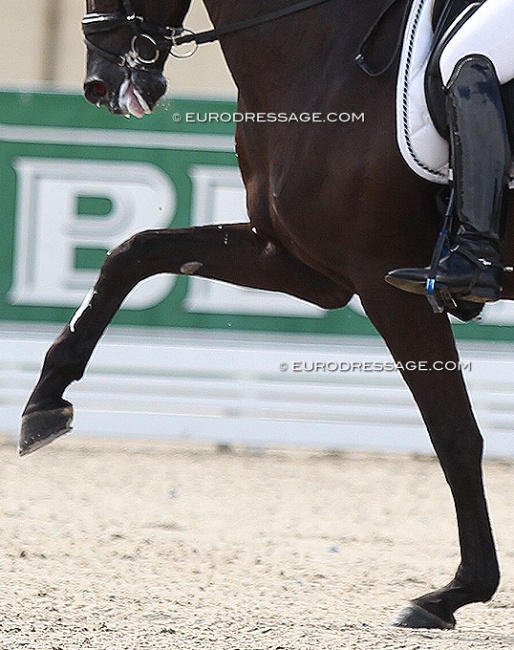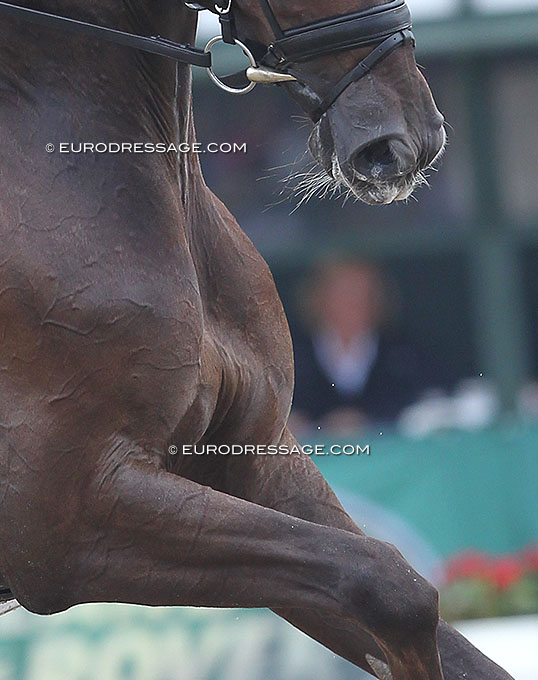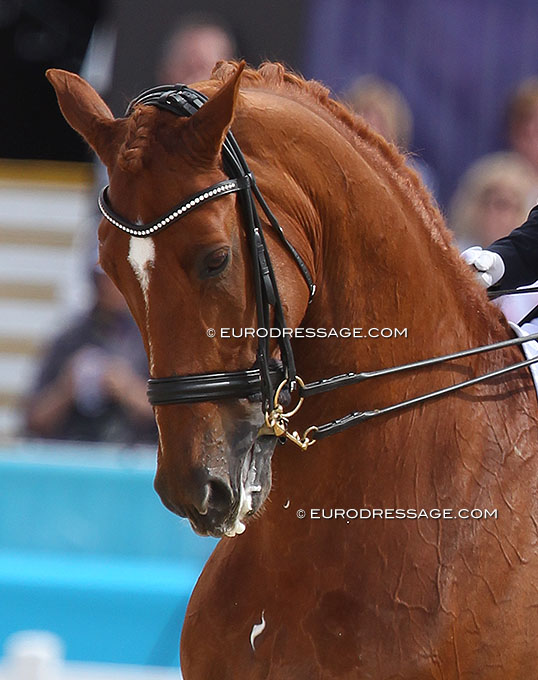
The guest column of this week is by Angelika Fromming, retired international dressage judge, and Hannes Müller, former head of the German Riding School in Warendorf and chair of the German Professional Riders Association. Both are highly esteemed clinicians.
"Change of Priorities - Training Scale over Quality of Movement"
In theory, judging a ride or a dressage tests could easily be done by the audience, riders and trainers. On the one hand, there are the international FEI regulations with precise information on what a horse's appearance should look like in a test. On the other hand, the FEI Dressage Judges Handbook specifies which requirements must be met in order to be able to award a mark between 10 and 0.
In practice, however, the list of situations that arise cannot be complete. The options are far too diverse for that. But the existing regulations provide very specific instructions for judging the major areas, such as the horse's level of training, the quality of movement, and the formal fulfilment of the respective dressage program.
The reference points for the development of FEI regulations were the experiences of international equestrian sport personalities at the end of the 1920s and the beginning of the 1930s. The Dressage Handbook from 2006 is the result of cross-continental discussions between experienced international judges. In all considerations, the practical experience of classical riding theory and, above all, the constantly evolving scientific findings were always crucial.
Movement Euphoria
But the search for particularly significant movement potential has led to a true "movement euphoria" with the introduction of dressage horse tests and the increasing importance of basic gaits. These exaggerated movements are occasionally achieved with downright bizarre training methods which are nothing than a violation of the horse’s nature.
It has now become all the more important that everyone involved recognizes what a natural movement sequence is and what way of moving is created artificially through tension or even repugnant aids. No one should be blinded anymore by tense, “spectacular” movements with braced backs.
It is often forgotten that the dressage test is, in principle, a test of correct training. And the correct training is reflected in the fulfilment of the training scale requirements set by the FEI regarding rhythm, relaxedness, contact, impulsion, straightness and collection.

taking short-cuts
The Conformation Excuse
What happens if a horse’s conformation conflicts with the specified requirements? To put it bluntly, according to the confirmed classical riding theory, more or less every horse can learn demanding dressage lessons such as piaffe. However, the execution of the piaffe thus developed does not always correspond to the appearance of a particularly talented and ideally built horse. Nevertheless, what has been achieved can give rider and horse a lot of joy, without compromising the horse's welfare in any way.
It becomes problematic when one element of the training scale is neglected in order to appear supposedly good at another element. General Horst Niemack, a former international judge from Germany, took a clear stance on this situation in the 1960s: “Problems in rhythm cannot be compensated for by any other points.”
Horses with particularly big, ground covering gaits can have a problem in a upper level dressage test if the riders have failed to develop a clear differentiation within the gait in the many years of training, resulting in a lack of achieving a certain degree of collection. If, for example, these horses are only presented at working tempo in Grand Prix tests, the juige should not award good marks.
Horses which are croup high have always been part of discussions in the past. If an overbuilt horse is able to carry weight with bent haunches and a relative elevation, this appearance is still hardly competitive with the appearance of a horse equipped with an ideal conformation. And it doesn't help to fake a supposed uphill tendency by deliberately and exaggeratedly elevating the neck.
Regarding contact, there has been a debate that has been going on for decades: “tight neck”, “held withers” and “light neck”. Short, very low-set necks quickly appear tight, which is something you should be aware of when buying a dressage athlete. You should also pay attention that a very small mouth can lead to problems with the double bridle, not always but it can. The requirements for training are then much more demanding, but solvable! On a submissive, correctly trained horse, the double bridle is simply an opportunity to have an even more discreet and invisible effect. If the opposite is the case, something went seriously wrong in the horse’s training and should be downscored accordingly.
No Difference in Neck Position
With regard to the neck in a dressage test, according to the regulations it is expected that the rider allows the horse to confidently step forward to the bit and thus allow an extended frame. This enables the horse to step-off more energetically with the hindquarters over the swinging back, swing through and step over.

In addition, during the test, onlookers should get the impression that the horse could be led into a stretching position at any time, even in collected movements such as piaffe or canter pirouette. However, this is only possible if the rider enables the horse to let go in the withers over a swinging back. Therefore the ideal check of a sitting piaffe in perfect posture would be a required give and retake of the reins (uberstreichen in the piaffe), thus also a demonstration of a safely developed balance.
The long-running favourite “tight neck”, which means the horse’s head being occasionally or constantly behind the vertical, has been the subject of discussion for years. Some say that it is because the neck has become much lighter due to breeding successes - fortunately there are no bull necks or pig necks anymore - and the horses therefore bend very quickly at the poll. Perhaps some riders don’t manage to ride their horses from behind into a friendly contact. Others claim that the only way to achieve a constant contact and an improved control over the hindquarters is through more significant yielding of the poll, meaning ride the horse behind the vertical.
Training Scale Above Movement
“Wars of faith” should not be of interest during a dressage test. It is a contradiction in itself that a well-trained horse is only able to fulfill the program through a longer lasting, tight head and neck position.
In a dressage test, only the quality of the execution of the individual movement and the overall impression as specified in the rules count. A permanently clearly visible “behind the vertical” position of the head and neck can by no means be described as correct in a dressage test. This must also be clearly reflected in the marks.
Keeping an eye on the desired overall impression that complies with the guidelines leads to clear decisions when assessing and determining marks - if the clear rules are followed.
Therefore, a change of priorities is necessary: “Training scale before movement quality“ has to be - undeniably - the motto when judging dressage tests at all levels. If the judges reflect this motto strictly in their marks, riders who do not yet respect this motto will follow.
-- by Angelika Fromming and Hannes Müller (translation provided by Silke Rottermann)
Related Links
Angelika Frömming on the Loss of Quality in Gaits Seen in the 7-YO Dressage Horse Class
Angelika Frömming: "To Win or Not To Win, That is the Question"
Trainining with Frömming: "Getting a Classically Schooled, Yet Incorruptible Eagle Eye of a Judge"